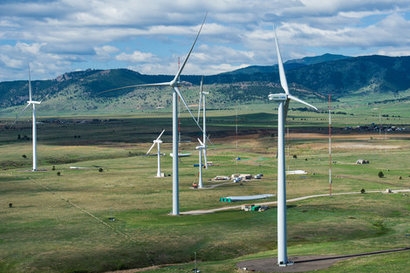
Upgrading wind farms that will reach the end of scheduled operation in the next five years with the latest and most efficient turbines would increase the UK’s generating capacity by more than 1.3 GW compared with a scenario in which turbines are taken down at the end of their lives.
This would yield more than 3 TWh of electricity per year, enough to power nearly 800,000 homes. The report claims it would save consumers more than £77 million ($108.5 million) per year on energy bills, compared to generating the same amount of electricity from gas-fired power stations. The electricity could be significantly cheaper than that from current onshore wind farms.
Analysis of a database of onshore wind farms across England, Scotland and Wales shows that there are close to 60 projects with over 750 turbines that will reach their 20th anniversary within the next five years. Failing to stimulate repowering could put these sites at risk for closing. Repowering could potentially benefit local communities through payments from developers, with a possible pay-out of more than £100 million ($141 million) from this first wave of projects, more than 80 percent of which would flow into rural regions.
Report author Dr Jonathan Marshall, ECIU Energy Analyst, said that with onshore wind the cheapest source of new electricity generation, repowering is a cost-effective way to secure new capacity,
“Britain installed its first wind farms during the early 1990s when the technology was in its infancy, and the electricity generated was significantly more expensive than that from fossil fuels,” Dr. Marshall said. “The industry has developed rapidly, however, and modern turbines generate vastly more power than older ones at costs competitive with coal and gas fired generation, especially when located onshore. It makes sense to repower sites of the earliest wind farms, which tend to be in locations that have the best wind resource.”
Simon Clarke, Conservative MP for Middlesbrough South and East Cleveland, added that upgrading British wind farms with the latest technology would deliver a big boost of clean power to the grid at a time when wind is already making a record contribution, delivering cash for communities that have hosted these sites for years. IUK reliance on gas imports from Russia could also potentially be reduced by the equivalent of two gas-fired power stations.
Two-thirds of the total lifetime spend on UK onshore wind projects remains in the UK, therefore a repowering programme could also lead to benefits spread across the economy, including steel production.
For additional information:

